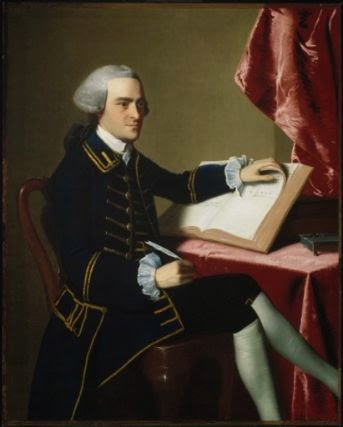. . . . On Monday the great question of independency and total separation from all political intercourse with Great Britain will come on. It will be carried, I expect, by a great majority, and then, I suppose we shall take upon us a new name. . . . .
Joseph Hewes (January 23, 1730 – November 10, 1779). in a letter to James Iredell Philadelphia, June 28th, 1776.
Joseph Hewes (January 23, 1730 – November 10, 1779) was a native of Princeton, New Jersey, where he was born in 1730. Hewes’s parents were members of the Society of Friends, commonly known as Quakers. Immediately after their marriage, they moved to New Jersey, which became Joseph Hewes’s home state. Hewes attended Princeton but there isn't any evidence that he actually graduated. What is known is that he became an apprentice of a merchant and in fact became a very successful merchant. After finishing his apprenticeship he earned himself a good name and a strong reputation, which would serve him well in becoming one of the most famous signers of the Declaration of Independence for North Carolina, along with William Hooper and John Penn. Hewes moved to Edenton, North Carolina at the age of 30 and won over the people of the colony with his charm and honorable businesslike character. Hewes was elected to the North Carolina legislature in 1763, only three years after he moved to the colony. After being re-elected numerous times in the legislature, Hewes was now focused on a new and more ambitious job as a continental congressman.
http://en.wikipedia.org/
(Lodge unknown, but was recorded as a Masonic visitor to Unanimity Lodge No. 7, Edenton, North Carolina, in December 1776, and was also buried with Masonic honors)









